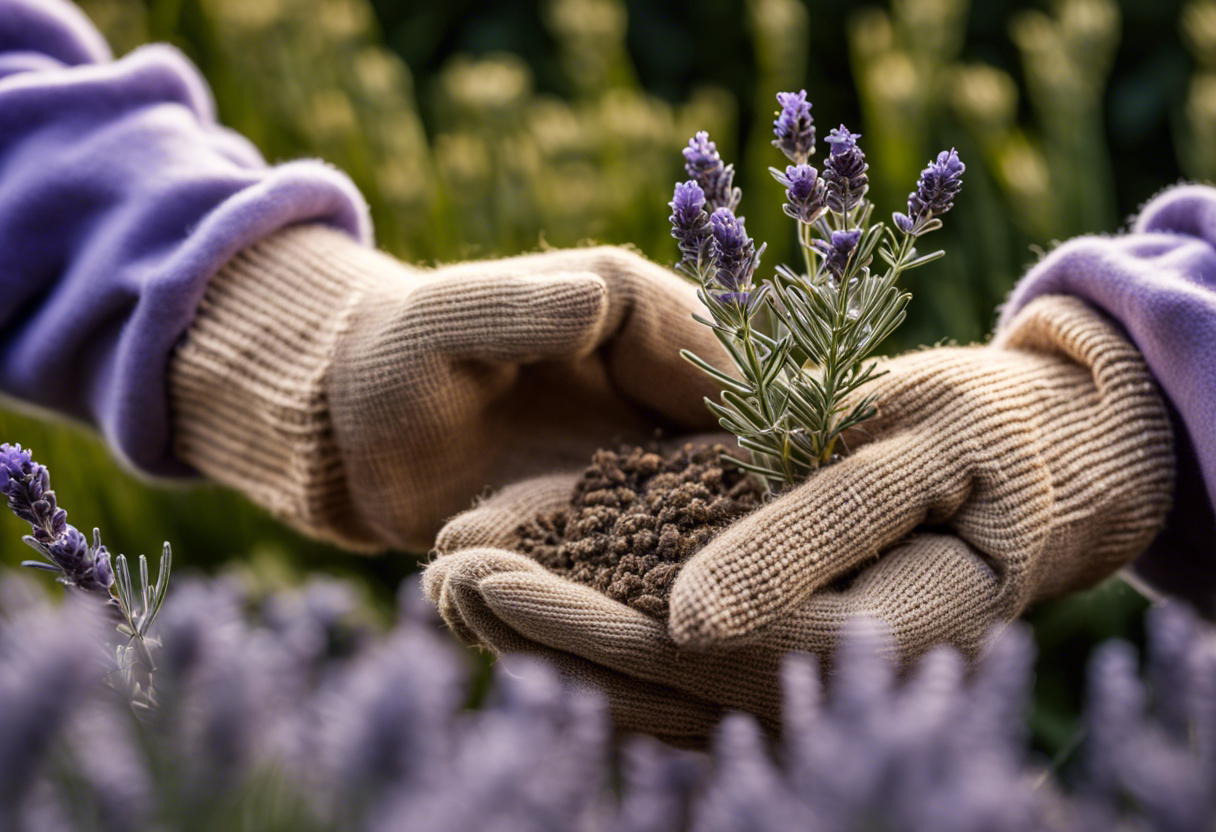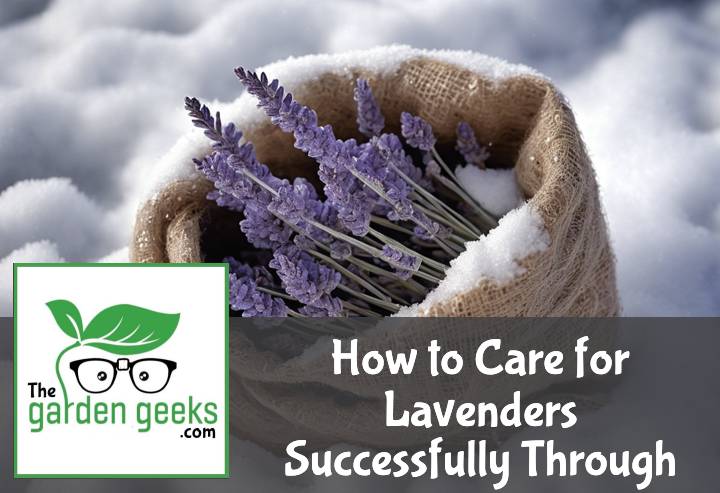Ever tried keeping your lavenders alive through the winter, only to find them wilted and lifeless come spring? You’re not alone. Lavenders can be a bit tricky to care for in colder months. But fear not! I’ve got your back with this guide on How to Care for Lavenders Successfully Through Winter.
From understanding lavender’s dormancy in winter to managing pests and diseases, I’ll walk you through the essential steps to ensure your lavenders survive and thrive. So buckle up, grab a hot cuppa, and let’s dive into the world of winter lavender care! Keep reading about How to Care for Lavenders Successfully Through Winter.
Key Takeaways
- Lavenders need well-drained soil and less watering in winter.
- Protect them from harsh weather by using horticultural fleece or moving pots indoors.
- Prune only after the last frost to prevent damage.
- Monitor for pests and diseases, especially root rot due to overwatering.
- Use of mulch can help insulate roots but avoid covering the crown of the plant.
- Consider varieties like ‘Munstead’ and ‘Hidcote’ which are more winter-hardy.

Why is Winter Care Important for Lavenders?
Winter care is crucial for lavenders. It’s not just about keeping them alive through the cold months, but also about preparing them for a healthy bloom in spring. Winterizing lavender plants isn’t rocket science, but it does require some knowledge and effort.
Understanding Lavender’s Dormancy in Winter
Lavenders go through a dormancy period in winter, much like bears hibernating. They’re not dead, they’re just sleeping! This period of rest allows them to conserve energy and prepare for the next growing season.
Understanding this lavender dormancy period is key to successful winter care. You see, while they’re snoozing away, they’re still vulnerable to harsh conditions. That’s why it’s important to provide the right kind of dormant lavender care during this time.
The Impact of Frost and Cold on Lavenders
Frost can be a real party pooper for your lavenders. It can cause damage to plant tissues and even lead to plant death in severe cases. But don’t panic! There are ways to protect your plants from these icy invaders.
The first step is understanding the effects of frost on lavenders. Frost can cause cell damage which leads to browning or blackening of leaves and stems. It’s like getting a really bad sunburn!
Next up: cold temperatures. Just as you wouldn’t want to be left outside in freezing weather without a coat, your lavenders feel the same way! Prolonged exposure to cold can lead to winter damage in lavenders, affecting their growth and survival.
So how do we combat this? By providing some form of frost protection for lavender plants during winter months. This could involve using protective covers or moving potted plants indoors when temperatures drop too low.
Remember folks, learning how to care for lavenders successfully through winter is all about understanding their needs and providing the right conditions. So, bundle up and get ready to brave the cold with your lavender buddies!
How to Prepare Lavenders for Winter?

Alright, folks, let’s talk about preparing lavenders for winter. It’s not just about throwing a blanket over them and hoping they’ll survive till spring. No siree! We’re talking proper planning and preparation here.
Choosing the Right Variety for Your Climate
First things first, you gotta choose the right lavender variety. Some are like those hardy Northerners who thrive in cold climates, while others prefer a bit of sun on their leaves. So, if you’re living somewhere that gets more snow than sunshine in winter, go for cold-hardy lavenders.
These frost-tolerant champs can handle a bit of chill and are your best bet when it comes to lavender winter protection. Just remember – choosing the right variety is half the battle won in learning how to care for lavenders successfully through winter.
Proper Planting and Location Selection
Next up is planting your lavender right and picking the perfect spot for it. Now listen up because this is crucial for winter care for lavender plants. You want to plant your lavender in a spot that gets plenty of sun and has well-draining soil.
Think of it as setting up a cozy winter home for your lavender where it can soak up some rays during the day and avoid getting its feet wet at night. This way, you’re giving your lavender the best chance at surviving winter by creating optimal conditions for its growth.
Pre-Winter Pruning and Fertilizing
Last but not least, don’t forget about pre-winter pruning and fertilizing. Think of this as tucking your lavender into bed before its long winter nap. Pruning helps keep your plant healthy by removing any dead or diseased parts.
And fertilizing? Well, that’s like giving your lavender a hearty meal before it hibernates. It helps strengthen the plant and prepare it for the cold months ahead. So, don’t skimp on this step if you’re serious about overwintering lavender plants successfully.

What are the Essential Winter Care Steps for Lavenders?
When it comes to lavender winter care, there are a few essential steps for lavender protection. Winterizing lavender plants is crucial, as cold weather can be tough on these beauties. The key areas to focus on are mulching, watering practices, and pest management. These practices will help in maintaining lavenders in winter.
Mulching Techniques for Protecting Roots
Mulching lavenders in winter is a great way to protect their roots from the harsh cold. It’s like giving your plants a cozy blanket! There are several effective mulching techniques that you can use.
One popular method involves spreading organic material like straw or bark chips around the base of the plant. This not only insulates the roots but also adds nutrients to the soil as it decomposes. The benefits of mulching lavenders go beyond just root protection through mulching; it also helps retain moisture and suppress weeds.
Watering Practices During Cold Months
Watering your lavenders during cold months might seem counterintuitive, but trust me, it’s important! Proper water management for lavenders can make all the difference between a thriving plant and a wilting one.
The trick is to keep them hydrated without overwatering. Too much water can lead to root rot, which is definitely not what we want! So remember folks, maintaining lavender hydration in winter doesn’t mean turning your garden into a swamp.
Monitoring and Managing Pests and Diseases
Winter pest control for lavenders is another crucial aspect of how to care for lavenders successfully through winter. Pests and diseases don’t take a vacation just because it’s cold out!
Regularly monitoring pests on lavender plants will help you catch any potential issues early on. If you notice anything amiss, don’t panic! There are plenty of disease prevention strategies for lavenders available.
And if despite your best efforts, your lavenders do fall sick, there are treatments available for wintertime lavender diseases. So don’t lose hope, and keep on gardening!
How to Handle Indoor Lavender Plants in Winter?
When it comes to indoor lavender care during winter, there are a few key things to keep in mind. It’s all about adjusting the light and temperature, and managing watering and humidity.
Adjusting Light and Temperature Conditions
Firstly, let’s talk about lavender light needs. These plants love sunlight, so make sure they’re getting plenty of it even in winter. If natural light is scarce, consider using grow lights.
Next up is temperature. The ideal temperature for lavender is between 60-65°F (15-18°C). So try to maintain this range indoors during winter.
Remember, adjusting plant light and maintaining the right winter plant temperature are crucial steps on how to care for lavenders successfully through winter.
Indoor Watering and Humidity Management
Moving on to watering, it’s important not to overdo it. Overwatering can lead to root rot which is a big no-no for lavenders! So when you’re watering indoor plants in winter, make sure the soil is just moist, not soggy.
Humidity management is another key aspect of indoor lavender care. Lavenders prefer drier conditions so avoid placing them near humidifiers or in rooms with high humidity like bathrooms or kitchens.
In conclusion, proper watering practices combined with effective humidity management, will ensure your indoor lavenders thrive throughout the winter months.
Common Mistakes in Winter Care of Lavenders
When it comes to winter lavender care, there are a few common mistakes that can turn your purple beauties into sad, wilted messes. Let’s dive into these errors and how to avoid them.
Overwatering or Underwatering Issues
One of the biggest common lavender mistakes is messing up the watering. You see, lavenders aren’t too fussy, but they do have their limits. Overwatering them can lead to root rot, while underwatering can leave them dehydrated and weak.
Getting the balance right isn’t rocket science. It’s all about maintaining moisture balance in lavenders. Too much water and you’re inviting disease; too little and you’re starving the plant. So remember, when it comes to lavender overwatering or underwatering, moderation is key!
Neglecting Frost Protection Measures
Another common mistake? Ignoring frost protection for lavenders. These plants are tough cookies, but winter frost can be a real party pooper.
Without proper protection, frost can damage the plant’s tissues leading to browning leaves and stunted growth. It’s like going out in a snowstorm without a coat – not fun! So don’t neglect those frost measures folks! Your lavenders will thank you for it.
Ignoring Signs of Pest Infestations or Diseases
Last but certainly not least on our list of common lavender mistakes is ignoring signs of pest infestations or diseases. Just like us humans, plants get sick too!
Ignoring signs of problems won’t make them go away – trust me on this one! Whether it’s aphids having a feast or some funky fungus causing trouble, recognizing lavender diseases early is crucial for managing lavender health in winter.
So there you have it folks! Remember: water wisely, protect from frost and keep an eye out for pests and diseases. That’s how to care for lavenders successfully through winter!

To Wrap Up
Just like a bear needs to prep for hibernation, your lavenders need some TLC to survive the winter months. With our guide on How to Care for Lavenders Successfully Through Winter, you’ll be a lavender-saving superhero!
So, get those gardening gloves on and let’s keep those purple beauties thriving! Your garden will thank you come springtime. Winterizing lavenders? Piece of cake!


